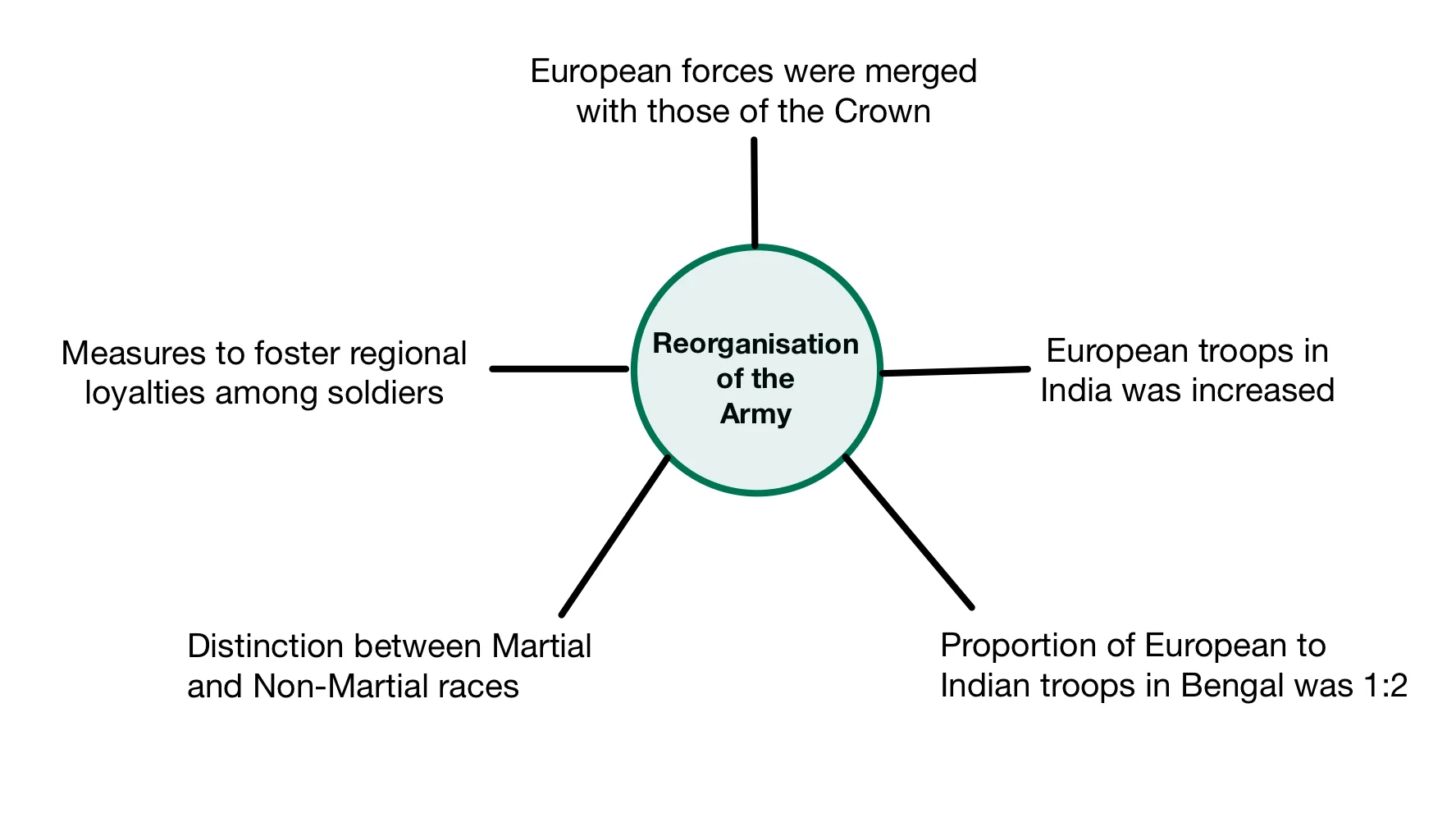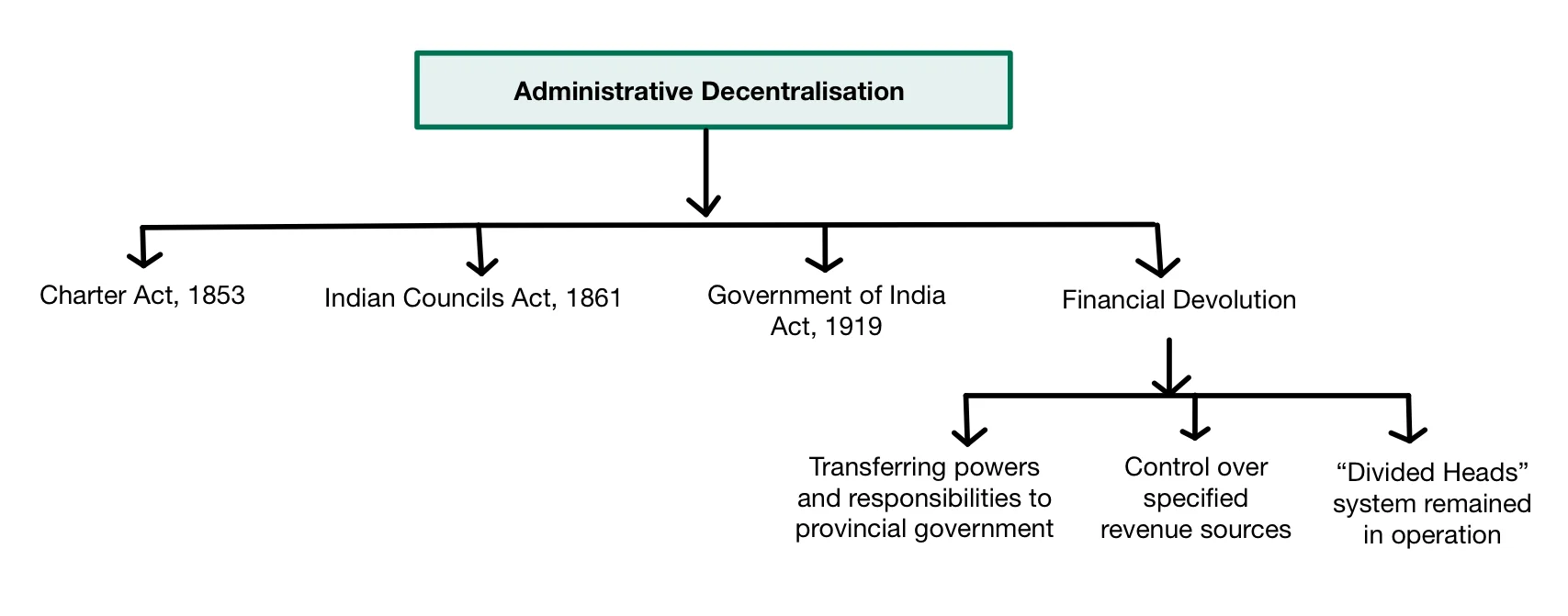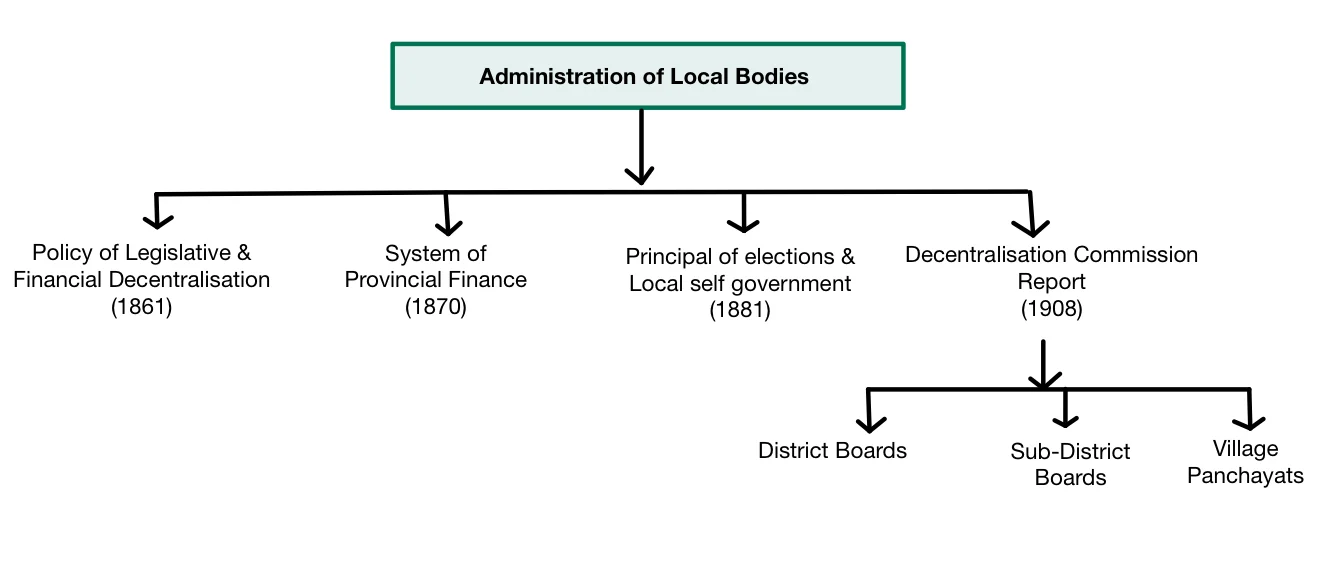It is an established historical fact that the fundamental changes in a colony’s political, economic, social, and administrative structure are primarily shaped by the ambitions and interests of the imperial power rather than the needs and interests of the colony itself. After the Indian Rebellion of 1857, various Western imperialist and capitalist countries, including the United States and Japan, posed significant challenges to Britain’s dominance in its colonies, semi-colonies, and international markets.
Rise of British Capitalist Interests #
During the latter half of the nineteenth century, the growing capitalist class exerted major influence over British policies in its colonies, particularly India.
- British Capitalist Lobby: A strong capitalist lobby emerged in Britain, significantly impacting foreign policy and trade.
- Phased Administrative Reforms: These global dynamics prompted Britain to strengthen control over India through phased reforms that sought to establish a solid foundation for British rule.
Bridging the Gap and Involving Natives in Administration #
After the 1857 rebellion, the British realized the threat posed by organized mass movements and sought to bridge the gap between rulers and subjects. This was done to reduce alienation and prevent future uprisings.
- Natives in Administration: Involving native individuals in the administrative apparatus provided the British a better understanding of Indian customs, traditions, and values. This also helped in reinforcing British governance.
Enroll now for UPSC Online Course
Administrative Reorganization Under the Crown (1858 – 1947) #
Following the Indian Revolt of 1857, a new administrative structure was established under direct control of the British Crown.
New Administrative Set-up #
- Government of India Act, 1858: This Act transferred the governance of India from the East India Company to the Crown. Queen Victoria assumed direct authority over the Indian territories.
- Queen Empress: The title “Empress of India” was given to Queen Victoria in 1876 by the British Parliament through the Royal Titles Act, marking increased direct involvement of the Crown in India’s governance.
The Secretary of State and the India Office #
The Secretary of State for India became the central authority overseeing Indian affairs.
- Role of the Secretary of State: As a British minister, the Secretary took on the role of the Crown’s advisor on all matters related to India.
- India Council: Established to assist the Secretary of State, the India Council consisted of members overseeing various departments like Accountant General, Medical Board, and Legal Advisor. All expenses of this office were covered by Indian revenues, highlighting the intricate financial relationship between British India and the British government.
The Government of India Act, 1858 #
This Act formalized the position of Viceroy for the Governor General, representing the Crown in India.
- Viceroy’s Role: The title of Viceroy held ceremonial importance, used primarily in state functions.
Expansion of Council #
The Governor General’s Executive Council gradually expanded:
| Year | Key Expansion |
| 1861 | Introduction of a fifth member. |
| 1874 | Authorisation for a sixth member. |
| 1892 | Additional members were raised to “not less than 10 and not more than 16.” |
| 1919 & 1935 | Expansion of Legislative Councils under subsequent Acts. |
The Secretary of State retained ultimate authority, often referred to as the “Grand Mughal”, and the centralized control of Indian affairs was strengthened by the laying of a direct cable line and opening of the Suez Canal in 1870.
Reorganization of the Army #
The Indian Army underwent major restructuring following the 1857 Sepoy Revolt, as the British authorities viewed it as a significant threat to their rule in India.

Key Changes in Army Reorganization #
- Merger of Forces: European forces of the East India Company were merged with those of the Crown.
- Troop Ratios: The number of European troops in India was increased, while the number of Indian troops was reduced.
- Martial and Non-Martial Races: Troops from regions like Punjab, Nepal, and the North-West were categorized as martial races, and recruitment increased from these areas.
- Defense Expenditure: Due to this reorganization, defense expenditure in India surged, accounting for 25% to 30% of total revenues, serving Imperial Britain’s interests more than India’s.
Administrative Decentralization #
The British implemented legislative decentralization to transfer limited powers to provincial governments.
Legislative Changes #
The table below outlines the major legislative changes and their impact:
| Legislation | Key Reform |
| Charter Act of 1833 | Centralization of Legislative Power: Reduced legislative powers of provincial governments, leaving them with only the authority to propose laws to the Governor-General-in-Council. |
| Indian Council Act of 1861 | Reversal of Centralization: Restored legislative powers to provinces like Bombay and Madras.
Extended the Viceroy’s Executive Council by incorporating “not less than 6 and not more than 12 additional members.” |
| Indian Council Act of 1892 and 1909 | Expansion of Legislative Councils: Increased the number of members in the Legislative Councils and expanded their powers. |
| Government of India Acts of 1919 and 1935 | Dyarchy and Provincial Autonomy: Introduced dyarchy, dividing powers between elected Indian ministers and British officials, and later expanded provincial autonomy. |
| Financial Decentralization | Lord Mayo’s Reforms: Provincial governments gained financial control over services like excise through the “Divided Heads” system, splitting revenue between Central and Provincial governments. |
#

Decentralisation of Power to Local Bodies #
The policy of legislative and financial decentralisation, initiated in 1861, set the foundation for local self-governance.
- Municipal Acts: Creating Municipalities and District Boards in provinces like Bengal, Madras, and Punjab facilitated local governance.
- Lord Ripon’s Reforms: The 1881-82 resolution under Lord Ripon extended the principle of elections, empowering local bodies. Acts passed in the 1880s brought substantial changes to municipal governance, allowing private citizens to become chairman of municipal bodies.

Enroll now for UPSC Online Course
| Must Read | |
| Current Affairs | Editorial Analysis |
| Upsc Notes | Upsc Blogs |
| NCERT Notes | Free Main Answer Writing |
Conclusion #
The administrative reorganization introduced by the British post-1857 was primarily aimed at consolidating imperial control in India. While decentralization efforts were made in administrative and legislative structures, they often served British economic and political interests, ensuring that real power remained centralized in British hands.
Sign up for the PWOnlyIAS Online Course by Physics Wallah and start your journey to IAS success today!
| Related Articles | |
| Economic Impact Of British Rule In India | GOVERNANCE |
| State Legislative Council: Composition, Function, and Role | The Revolt of 1857: India’s First War of Independence |

 GS Foundation
GS Foundation Crash Course
Crash Course Combo
Combo Optional Courses
Optional Courses Degree Program
Degree Program












